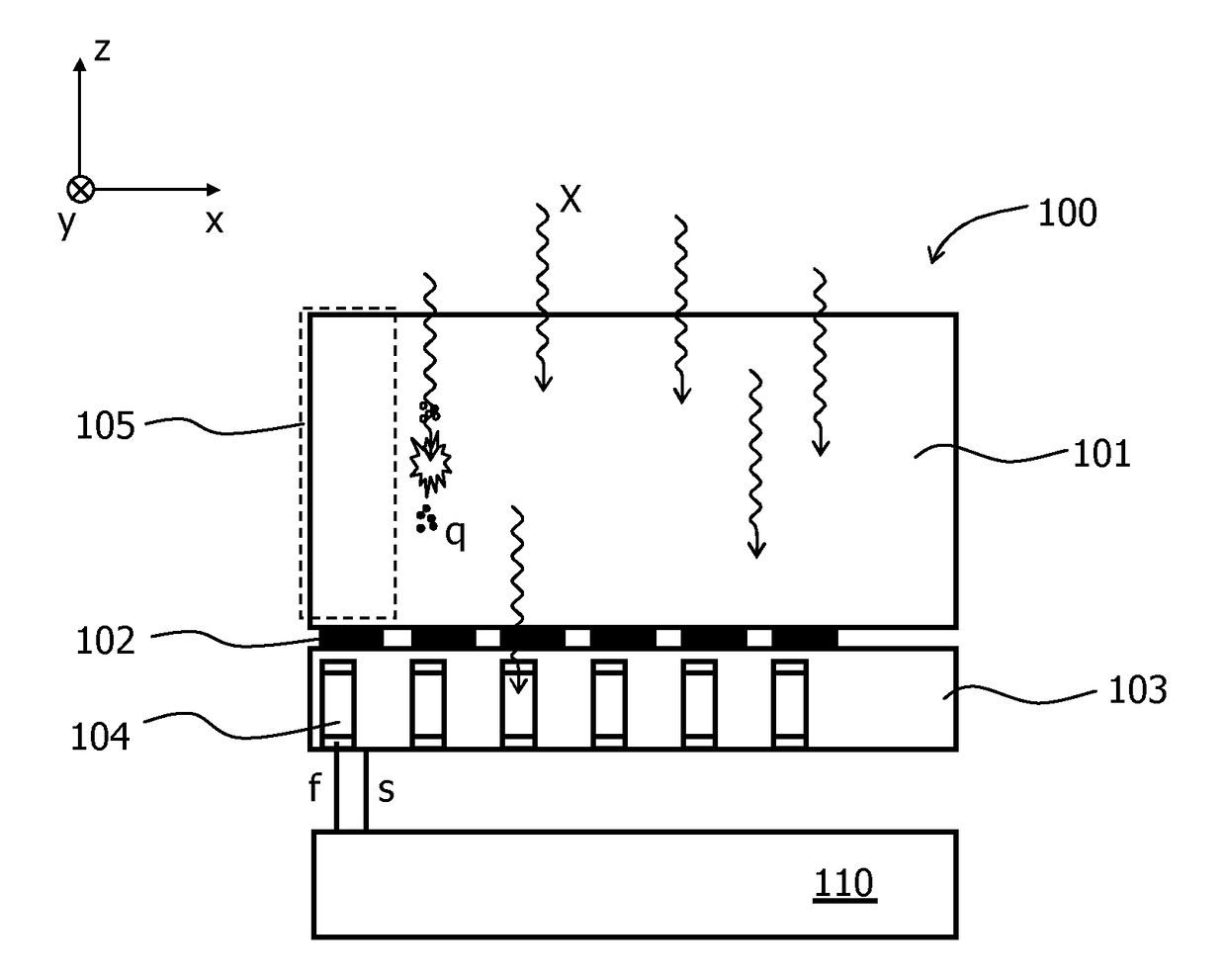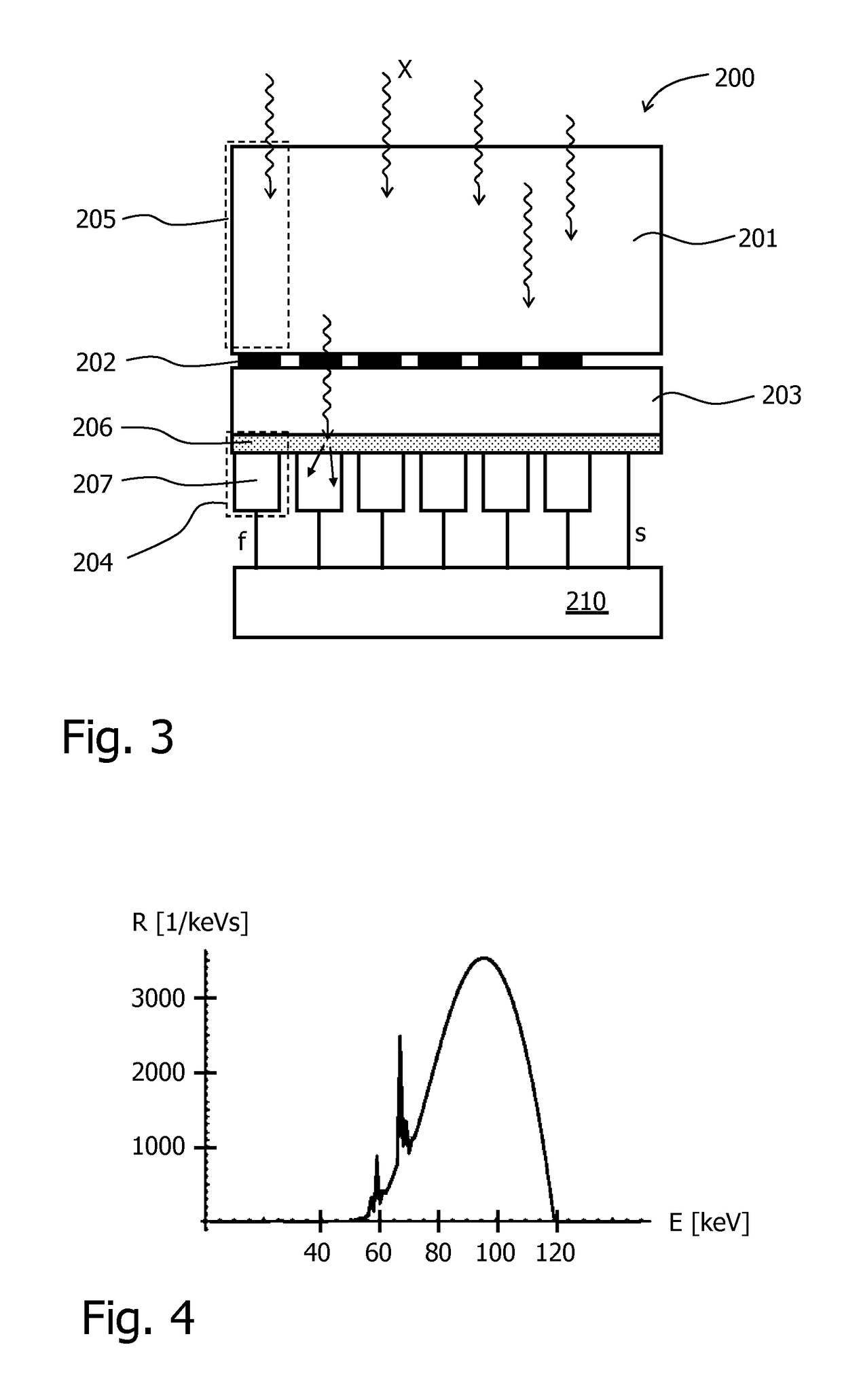Photon counting x-ray detector
a detector and photon counting technology, applied in the field of x-ray detectors, can solve problems such as inability to accurately determine correction factors, and achieve the effect of improving dynamic range and accurate determination of x-ray radiation
- Summary
- Abstract
- Description
- Claims
- Application Information
AI Technical Summary
Benefits of technology
Problems solved by technology
Method used
Image
Examples
Embodiment Construction
[0046]Photon counting spectral CT faces the challenges of having to cope with very high X-ray flux rates, conditions under which even the best counting detectors build from CdTe or CZT behave in an intrinsically non-linear way due to pulse-pileup and dead-time effects. Depending on the detector electronics the behavior of the detectors can be modeled by the paralyzable or non-paralyzable detector behavior. In both cases the deviations from linearity are small as long as the rates remain smaller than the inverse deadtime but behave very differently around or above that level.
[0047]For example, the output count rate m of a paralyzable detector is a function of the input count rate r (number of incident X-ray photons per time) and a parameter τ which is related to the width of the pulses generated by the detector. It is theoretically given by the formula
m=rexp(−r·τ).
[0048]FIG. 1 shows the curve corresponding to this formula, which has a maximum at rmax=1 / τ. For one measurement of the o...
PUM
| Property | Measurement | Unit |
|---|---|---|
| distance | aaaaa | aaaaa |
| spectrally resolved photon counting CT | aaaaa | aaaaa |
| volume | aaaaa | aaaaa |
Abstract
Description
Claims
Application Information
 Login to View More
Login to View More - R&D
- Intellectual Property
- Life Sciences
- Materials
- Tech Scout
- Unparalleled Data Quality
- Higher Quality Content
- 60% Fewer Hallucinations
Browse by: Latest US Patents, China's latest patents, Technical Efficacy Thesaurus, Application Domain, Technology Topic, Popular Technical Reports.
© 2025 PatSnap. All rights reserved.Legal|Privacy policy|Modern Slavery Act Transparency Statement|Sitemap|About US| Contact US: help@patsnap.com



